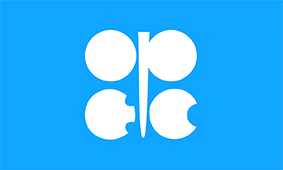
Oil Price Edges Lower as OPEC+ Meeting Expected to Confirm Output Cuts

Despite the new cuts, OPEC stopped short of pledging action beyond March and analysts questioned the impact of the latest curbs, Reuters reported.
Brent futures LCOc1 were down 10 cents, or 0.2%, at $63.29 by 0730 GMT.
West Texas Intermediate oil futures CLc1 fell 7 cents, or 0.1%, to $58.36 a barrel. They hit $59.12 a barrel on Thursday, the highest since the end of September.
The Organization of the Petroleum Exporting Countries (OPEC) and allies including Russia - a grouping known as OPEC+ - agreed on Thursday to more output cuts to avert oversupply early next year as economic growth stagnates amid the U.S.-China trade war.
The agreement, which needs to be formally adopted later on Friday, will cut an extra 500,000 barrels per day (bpd) of production, through tighter compliance and some adjustments. The group has been withholding 1.2 million bpd and the increased amount represents about 1.7% of global oil output.
“The key question is whether these reported cuts will actually reflect fresh cuts and so help to reduce the surplus in 1Q20, or whether they will just formalize the over-compliance that we have seen from the group as a whole,” ING Economics said in a note.
A panel of ministers representing OPEC and non-OPEC producers led by Russia recommended the cuts, according to Russian Energy Minister Alexander Novak.
Details need to be hammered out at Friday’s OPEC+ meeting in Vienna.
Any price gains from the OPEC+ output cut are likely to benefit American producers not party to any supply curbing agreement. American drillers have been breaking production records even as they cut the number of oil rigs in operation, filling gaps in global supplies.



Trump weighs using $2 billion in CHIPS Act funding for critical minerals

Codelco cuts 2025 copper forecast after El Teniente mine collapse

Electra converts debt, launches $30M raise to jumpstart stalled cobalt refinery

Barrick’s Reko Diq in line for $410M ADB backing

Abcourt readies Sleeping Giant mill to pour first gold since 2014

Nevada army depot to serve as base for first US strategic minerals stockpile

SQM boosts lithium supply plans as prices flick higher

Viridis unveils 200Mt initial reserve for Brazil rare earth project

Tailings could meet much of US critical mineral demand – study

Kyrgyzstan kicks off underground gold mining at Kumtor

Kyrgyzstan kicks off underground gold mining at Kumtor

KoBold Metals granted lithium exploration rights in Congo

Freeport Indonesia to wrap up Gresik plant repairs by early September

Energy Fuels soars on Vulcan Elements partnership

Northern Dynasty sticks to proposal in battle to lift Pebble mine veto

Giustra-backed mining firm teams up with informal miners in Colombia

Critical Metals signs agreement to supply rare earth to US government-funded facility

China extends rare earth controls to imported material

Galan Lithium proceeds with $13M financing for Argentina project

Kyrgyzstan kicks off underground gold mining at Kumtor

Freeport Indonesia to wrap up Gresik plant repairs by early September

Energy Fuels soars on Vulcan Elements partnership

Northern Dynasty sticks to proposal in battle to lift Pebble mine veto

Giustra-backed mining firm teams up with informal miners in Colombia

Critical Metals signs agreement to supply rare earth to US government-funded facility

China extends rare earth controls to imported material

Galan Lithium proceeds with $13M financing for Argentina project

Silver price touches $39 as market weighs rate cut outlook

















